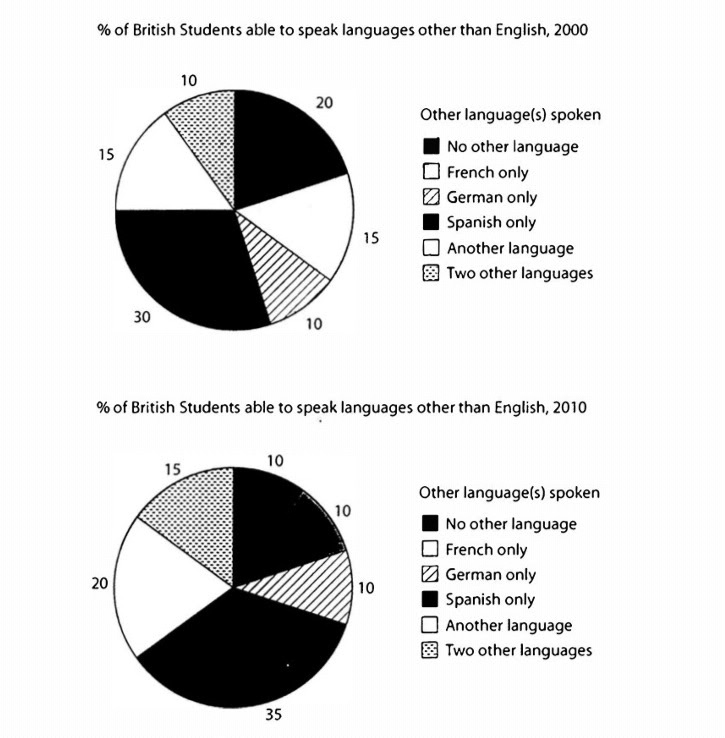Greetings. I tried to give feedback to another student. It was in the unanswered section. I tried my level best, spend a good 20 min on it only to get a warning "not to post useless comments".
Anyways this is my response to task 1. I will appreciate if someone can comment on it.
Thanks in advance
The two given pie charts compare the percentages of students belonging to a British University, who were multilingual and they could speak languages other than English in the year 2000 and 2010.
Overall, both the charts show that the largest proportion belonged to unilingual students. While the trend for other categories were similar both the years, the biggest variation can be seen in the percentages of Spanish speaking students.
To begin with, those students that could only speak English formed the biggest group both years with 30% and 35%. However, the second largest proportion with 20% in 2000 belonged to Spanish speaking students, this number fell by 5% in 2010. Similar drop in the percentage was noted in francophones as well, from 15% to 10% next year.
Moving on to the other two determinants, two other languages and another languages, percentages for these students increased from 15% and 10% to 20% and 15% respectively. The only other category which showed no change was the number of German speaking students which remained constant at 10%.
Anyways this is my response to task 1. I will appreciate if someone can comment on it.
Thanks in advance
students able to speak other languages than english
The two given pie charts compare the percentages of students belonging to a British University, who were multilingual and they could speak languages other than English in the year 2000 and 2010.
Overall, both the charts show that the largest proportion belonged to unilingual students. While the trend for other categories were similar both the years, the biggest variation can be seen in the percentages of Spanish speaking students.
To begin with, those students that could only speak English formed the biggest group both years with 30% and 35%. However, the second largest proportion with 20% in 2000 belonged to Spanish speaking students, this number fell by 5% in 2010. Similar drop in the percentage was noted in francophones as well, from 15% to 10% next year.
Moving on to the other two determinants, two other languages and another languages, percentages for these students increased from 15% and 10% to 20% and 15% respectively. The only other category which showed no change was the number of German speaking students which remained constant at 10%.

Screenshot_20200908.jpg
Screenshot_20200908.jpg
